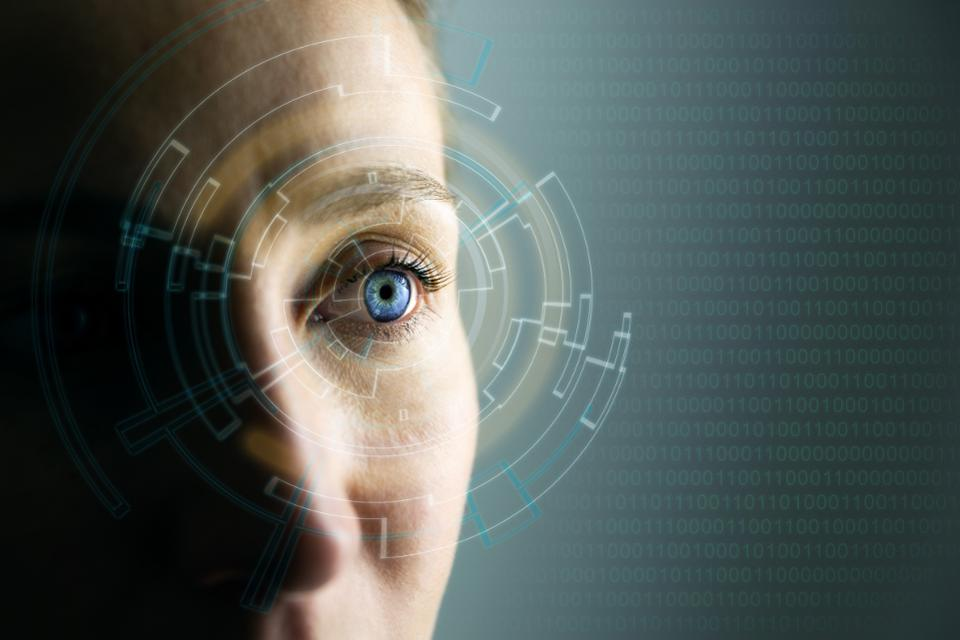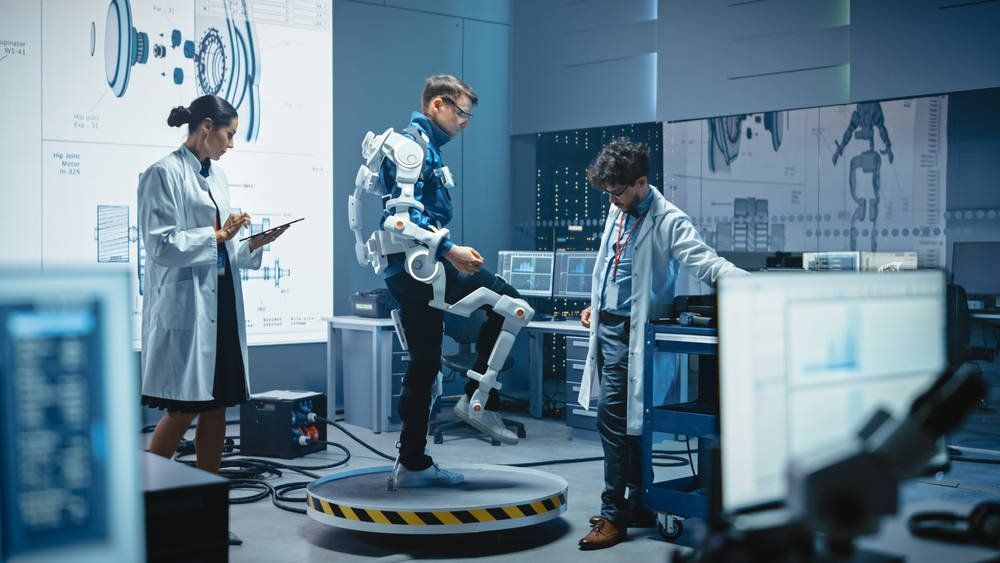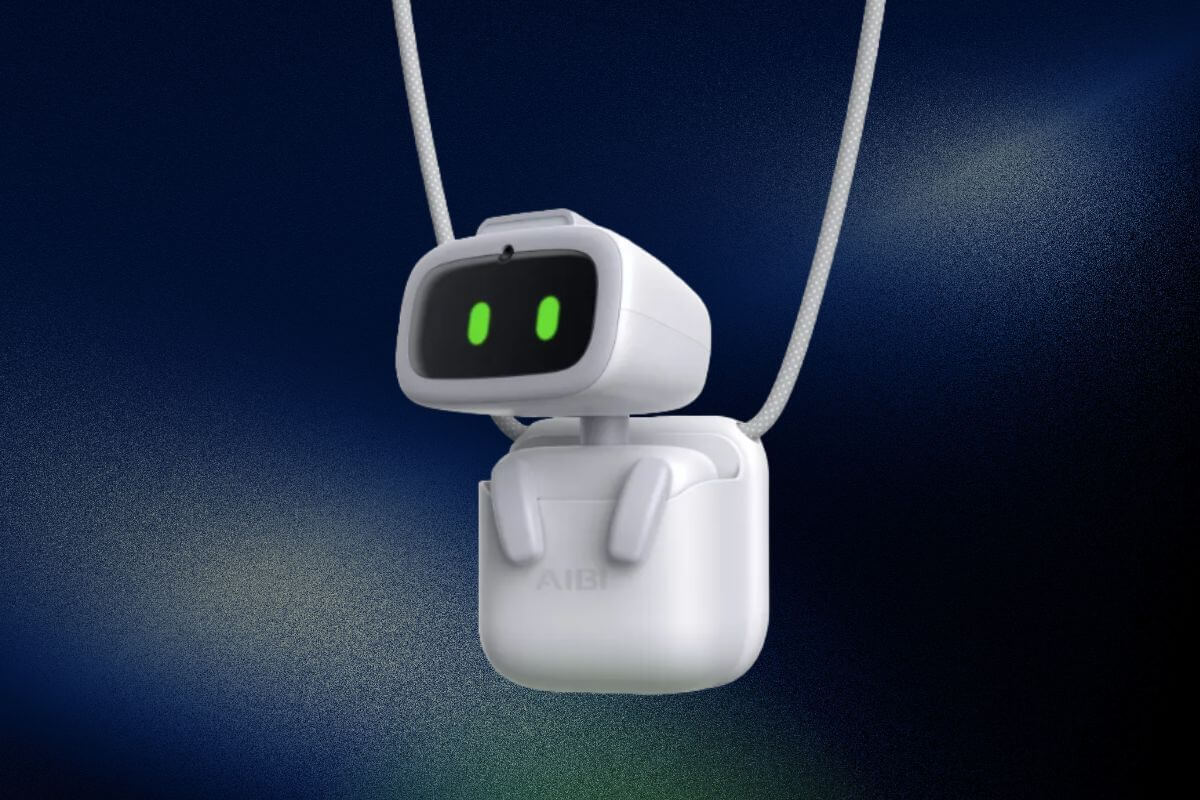The Dawn of an Intelligent Era
The rapid evolution of artificial intelligence (AI) is no longer a futuristic concept confined to science fiction; it’s an tangible force reshaping our present and, more profoundly, dictating the course of our future. At the heart of this transformation lies the burgeoning field of AI devices. These aren’t just gadgets with smart features; they are a new class of electronics imbued with the ability to learn, reason, and adapt, promising a future where technology seamlessly integrates with and anticipates our needs. From the smartphones in our pockets to the self-driving cars on our roads, AI is quietly, yet powerfully, revolutionizing the way we interact with the digital and physical worlds. This comprehensive exploration delves into the multifaceted aspects of AI devices, examining their underlying technologies, diverse applications, profound societal impacts, and the exciting trajectory of their development.
Understanding the Core: What Powers AI Devices?
At its essence, an AI device is any electronic apparatus that incorporates artificial intelligence to perform tasks that typically require human cognitive abilities. This goes beyond simple automation; it involves machine learning (ML), deep learning (DL), and natural language processing (NLP), enabling these devices to interpret data, recognize patterns, make decisions, and even understand and generate human language.
A. Machine Learning: The Foundation of Intelligence
Machine learning is the bedrock upon which most AI devices are built. It’s a subset of AI that allows systems to learn from data without being explicitly programmed. Instead of following rigid instructions, ML algorithms analyze vast datasets, identify correlations, and build predictive models.
- Supervised Learning: This involves training a model on a labeled dataset, meaning the input data is paired with the correct output. For instance, an image recognition system might be trained on thousands of pictures of cats and dogs, each labeled correctly. The model learns to associate specific features with each animal, enabling it to classify new, unseen images.
- Unsupervised Learning: In contrast, unsupervised learning deals with unlabeled data. The algorithms are tasked with finding inherent patterns or structures within the data on their own. This is useful for tasks like customer segmentation, where the system identifies natural groupings of customers based on their behavior without prior knowledge of those groups.
- Reinforcement Learning: This is a more dynamic approach where an AI agent learns by interacting with an environment. It receives rewards for desirable actions and penalties for undesirable ones, gradually optimizing its behavior to achieve a specific goal. This is particularly relevant in robotics and autonomous systems, where the AI needs to make decisions in real-time based on environmental feedback.
B. Deep Learning: Mimicking the Brain
Deep learning is a specialized branch of machine learning that utilizes neural networks with multiple layers (hence “deep”). These networks are inspired by the structure and function of the human brain, allowing them to process complex data like images, sound, and text with remarkable accuracy. The multi-layered architecture enables the extraction of increasingly abstract features from the raw input data. For example, in an image, the first layer might detect edges, the next might identify shapes, and subsequent layers could recognize objects. This hierarchical processing makes deep learning exceptionally powerful for tasks such as facial recognition, speech synthesis, and natural language understanding. The massive computational power required for training deep learning models is often provided by Graphics Processing Units (GPUs), which are highly efficient at parallel processing.
C. Natural Language Processing (NLP): Bridging the Human-Machine Divide
NLP is the field that enables computers to understand, interpret, and generate human language. It’s crucial for the development of conversational AI and voice-controlled devices. NLP allows AI devices to:
- Understand Spoken Commands: Converting spoken words into text (speech-to-text) and then interpreting their meaning.
- Respond Intelligently: Generating coherent and contextually appropriate replies (text-to-speech or text generation).
- Perform Sentiment Analysis: Determining the emotional tone of text.
- Translate Languages: Breaking down language barriers by translating between different human languages.
The Landscape of AI Devices: A Spectrum of Innovation
AI devices are already pervasive, integrating into various aspects of our lives. Their applications are constantly expanding, pushing the boundaries of what’s possible.
A. Smart Home Devices: Intelligent Living Spaces
The smart home ecosystem is perhaps where the average consumer encounters AI most directly. These devices aim to automate and personalize the home environment, offering convenience, efficiency, and enhanced security.
- Smart Speakers and Voice Assistants (e.g., Amazon Echo, Google Home): These are central to many smart homes, using NLP to understand voice commands and control other connected devices. They can play music, set alarms, provide information, and manage smart appliances. Their ability to learn user preferences and adapt to individual speech patterns makes them indispensable for hands-free interaction.
- Smart Thermostats (e.g., Nest Learning Thermostat): These devices learn your preferred temperature settings and adjust themselves automatically to optimize energy consumption. They can also detect when you’re away and save energy accordingly. Advanced models even integrate with local weather forecasts to pre-heat or pre-cool your home.
- Smart Lighting Systems: Beyond simple on/off controls, AI-powered lighting can adjust brightness and color temperature based on time of day, ambient light, or even your mood. Some systems can simulate natural light cycles, promoting better sleep and well-being.
- Smart Security Cameras and Doorbells: Equipped with AI, these devices can differentiate between people, animals, and vehicles, reducing false alarms. They can also recognize familiar faces and alert you to unknown visitors. Facial recognition capabilities are becoming increasingly sophisticated, enhancing security and convenience.
- Robotic Vacuum Cleaners (e.g., Roomba): Modern robotic vacuums use AI to map your home, navigate around obstacles, and optimize cleaning paths. Some models can even identify dirtier areas and focus their cleaning efforts there. They learn the layout of your home over time, becoming more efficient with each use.
- Smart Appliances (e.g., Refrigerators, Ovens): AI-enabled refrigerators can track inventory, suggest recipes based on available ingredients, and even order groceries when supplies run low. Smart ovens can preheat themselves, adjust cooking times based on the food being prepared, and even monitor the cooking process to ensure optimal results.
B. Wearable AI Devices: Personalized Health and Wellness
Wearable technology has embraced AI to provide personalized insights into our health, fitness, and overall well-being.
- Smartwatches (e.g., Apple Watch, Samsung Galaxy Watch): Beyond displaying notifications, smartwatches with AI capabilities monitor heart rate, sleep patterns, activity levels, and even detect irregular heart rhythms. They use ML algorithms to analyze this data and provide actionable health recommendations. Some advanced smartwatches can even perform ECGs and detect falls, automatically alerting emergency services.
- Fitness Trackers: While simpler than smartwatches, AI-powered fitness trackers offer more sophisticated analysis of workouts, calorie burn, and recovery. They can identify different types of exercise and provide tailored coaching.
- Smart Hearables/Earbuds: These go beyond simple audio playback, offering real-time language translation, personalized audio experiences, and even health monitoring. Some can track heart rate from the ear canal or provide biofeedback to improve focus.
- Smart Clothing and Apparel: Integrating sensors and AI directly into clothing allows for unobtrusive monitoring of vital signs, posture, and athletic performance. For example, smart shirts can track breathing rate and muscle activity during exercise.
C. Autonomous Vehicles: Revolutionizing Transportation
Self-driving cars are perhaps the most prominent example of AI in action, promising to transform transportation, enhance safety, and improve efficiency.
- Self-Driving Cars: These vehicles use a complex array of sensors (cameras, radar, lidar, ultrasonic) to perceive their surroundings. AI algorithms then process this vast amount of data in real-time to navigate, avoid obstacles, and make driving decisions. They are constantly learning from driving data, improving their performance and safety. Levels of autonomy range from driver-assistance features (like adaptive cruise control) to fully autonomous vehicles that require no human intervention.
- Drones for Delivery and Inspection: AI-powered drones are being used for various applications, including package delivery, infrastructure inspection, agriculture monitoring, and search and rescue operations. Their AI enables autonomous navigation, obstacle avoidance, and precise task execution.
- Robots in Logistics and Manufacturing: AI-driven robots are transforming warehouses and factories, handling tasks like picking and packing, assembly, and quality control. They can learn to optimize their movements and adapt to changing production demands.
D. AI in Healthcare: Diagnostic and Therapeutic Innovations
AI devices are poised to revolutionize healthcare, from disease diagnosis to personalized treatment plans.
- AI-Powered Diagnostic Tools: AI can analyze medical images (X-rays, MRIs, CT scans) with incredible accuracy, assisting radiologists in detecting subtle anomalies that might be missed by the human eye. It can also analyze patient data to identify disease risks and predict treatment outcomes.
- Robotic Surgery: AI-guided surgical robots enhance precision and minimize invasiveness during complex operations, leading to faster recovery times and better patient outcomes.
- Personalized Medicine: AI can analyze a patient’s genetic information, lifestyle, and medical history to develop highly personalized treatment plans and drug dosages.
- Wearable Medical Devices: Beyond consumer wearables, specialized AI-powered medical devices monitor chronic conditions, administer medication, and provide real-time alerts for critical health events. For example, continuous glucose monitors with AI can predict blood sugar fluctuations.
E. AI in Education: Tailored Learning Experiences
AI devices and platforms are transforming education by providing personalized learning experiences and automating administrative tasks.
- Intelligent Tutoring Systems: These AI systems adapt to a student’s learning style and pace, providing customized instruction, feedback, and practice exercises. They can identify areas where a student is struggling and offer targeted support.
- Personalized Learning Platforms: AI can curate educational content and learning paths based on individual student needs and preferences, making learning more engaging and effective.
- Automated Grading and Feedback: AI can assist educators by automating the grading of certain assignments and providing immediate feedback to students, freeing up teachers to focus on more complex tasks.
- Language Learning Apps: AI-powered language learning apps use NLP and speech recognition to help users practice pronunciation, grammar, and vocabulary, providing instant feedback and personalized exercises.
F. AI in Security and Surveillance: Enhancing Protection
AI is playing an increasingly critical role in enhancing security measures across various domains.
- Facial Recognition Systems: Used for access control, law enforcement, and even in retail environments to identify individuals. AI algorithms can analyze facial features with high accuracy, even in challenging conditions.
- Anomaly Detection in Surveillance: AI can analyze vast amounts of video footage to identify unusual or suspicious activities, alerting security personnel to potential threats. This moves beyond simple motion detection to understand context and behavior.
- Cybersecurity AI: AI-powered tools are used to detect and prevent cyberattacks by identifying malicious patterns in network traffic and user behavior. They can learn to recognize new threats and adapt defense strategies in real-time.
The Societal Impact of AI Devices: Navigating the New Normal
The widespread adoption of AI devices brings with it a multitude of societal implications, both positive and challenging.
A. Economic Transformation and Job Displacement
The rise of AI devices will undoubtedly reshape the global economy. Automation driven by AI can lead to increased productivity and efficiency, but it also raises concerns about job displacement in sectors susceptible to automation. New jobs will emerge in areas like AI development, maintenance, and ethical oversight, but a significant societal challenge will be ensuring a smooth transition for the workforce. Governments and educational institutions will need to invest in reskilling and upskilling programs to prepare individuals for the jobs of the future.
B. Ethical Considerations and Bias
The algorithms powering AI devices are trained on data, and if that data is biased, the AI will perpetuate and even amplify those biases. This can lead to unfair or discriminatory outcomes in areas like hiring, lending, and even criminal justice. Ensuring fairness, transparency, and accountability in AI development is paramount. Addressing algorithmic bias requires careful data curation, diverse datasets, and robust ethical guidelines for AI developers and deployers. The concept of “explainable AI” (XAI) is gaining traction, aiming to make AI decisions more understandable and interpretable.
C. Privacy Concerns and Data Security
AI devices collect vast amounts of personal data, from our voice commands and health metrics to our location and purchasing habits. This raises significant privacy concerns. Ensuring the secure storage and ethical use of this data is critical to maintaining public trust. Strong data protection regulations, like GDPR, are becoming increasingly important. The potential for data breaches and misuse necessitates robust cybersecurity measures and a commitment to data anonymization and privacy-by-design principles.
D. Human-AI Interaction and Social Impact
As AI devices become more integrated into our lives, the nature of human-AI interaction will evolve. While convenience is a major benefit, over-reliance on AI could potentially diminish human skills or lead to social isolation. Striking a balance between leveraging AI’s capabilities and maintaining human connection and agency will be crucial. The development of emotionally intelligent AI and more natural conversational interfaces could enhance human-AI collaboration.
E. Accessibility and Inclusion
AI devices have the potential to significantly improve accessibility for individuals with disabilities, offering new ways to interact with technology and the world. For example, AI-powered assistive technologies can help visually impaired individuals navigate their surroundings or assist those with speech impediments in communication. However, it’s vital to ensure that AI development is inclusive and considers the needs of diverse populations, avoiding the creation of new digital divides.
Future Trends in AI Devices
The future of AI devices is characterized by continuous innovation and increasingly sophisticated capabilities. Several key trends are shaping this exciting trajectory.
A. Edge AI: Intelligence on the Device
Traditionally, AI processing often occurred in the cloud. However, a growing trend is edge AI, where AI computations are performed directly on the device itself, rather than relying on remote servers.
- Benefits: Edge AI offers several advantages, including reduced latency (faster responses), enhanced privacy (data doesn’t leave the device), lower bandwidth requirements, and improved reliability (less dependence on internet connectivity).
- Applications: This is crucial for applications requiring real-time processing, such as autonomous vehicles, augmented reality devices, and smart medical implants. It also enables AI to function in areas with limited or no internet access.
B. explainable AI (XAI): Building Trust and Transparency
As AI systems become more complex, understanding how they arrive at their decisions becomes challenging. Explainable AI (XAI) is a critical area of research focused on making AI models more transparent and interpretable. This is particularly important in high-stakes applications like healthcare and finance, where understanding the reasoning behind an AI’s decision is crucial for accountability and trust. XAI aims to provide insights into an AI’s decision-making process, rather than treating it as a “black box.”
C. Generative AI: Creating New Realities
Generative AI, capable of creating new content such as images, text, and even music, is poised to revolutionize AI devices. Imagine devices that can generate personalized content on demand, or create custom designs based on your preferences. This will open up new possibilities for creativity, entertainment, and personalized experiences. Large language models (LLMs) are a prime example of generative AI, capable of generating human-like text.
D. Multi-Modal AI: Beyond Single Senses
Current AI often specializes in processing one type of data (e.g., images or text). Multi-modal AI aims to integrate and interpret information from multiple modalities simultaneously, mimicking human perception. For example, an AI device could understand spoken language, analyze facial expressions, and interpret gestures to gain a more complete understanding of a situation. This will lead to more intuitive and contextually aware AI devices.
E. AI for Sustainability: A Greener Future
AI devices are being increasingly deployed to address environmental challenges. This includes AI for optimizing energy consumption in smart buildings, managing waste and recycling, monitoring environmental changes, and developing more sustainable manufacturing processes. AI can help us make more informed decisions to reduce our carbon footprint and promote a greener future. For instance, AI can optimize traffic flow to reduce emissions or predict periods of high energy demand to balance grid load.
Conclusion
The future of electronics is undeniably intertwined with the relentless advancement of artificial intelligence. AI devices are not merely an incremental improvement; they represent a fundamental shift in how we interact with technology and, by extension, with the world around us. From enhancing our daily lives through smart homes and personalized health solutions to driving innovation in transportation, healthcare, and education, the potential of AI devices is vast and largely untapped.
However, as we embrace this intelligent revolution, it is imperative to do so with careful consideration of the ethical implications, privacy concerns, and societal adjustments that will inevitably arise. The responsibility lies with developers, policymakers, and indeed, all of us, to ensure that AI is developed and deployed in a way that is fair, transparent, secure, and ultimately, beneficial to all humanity. The journey of AI devices is just beginning, and the electronic revolution it heralds promises a future where intelligence is not just embedded in our devices, but interwoven into the very fabric of our existence.














